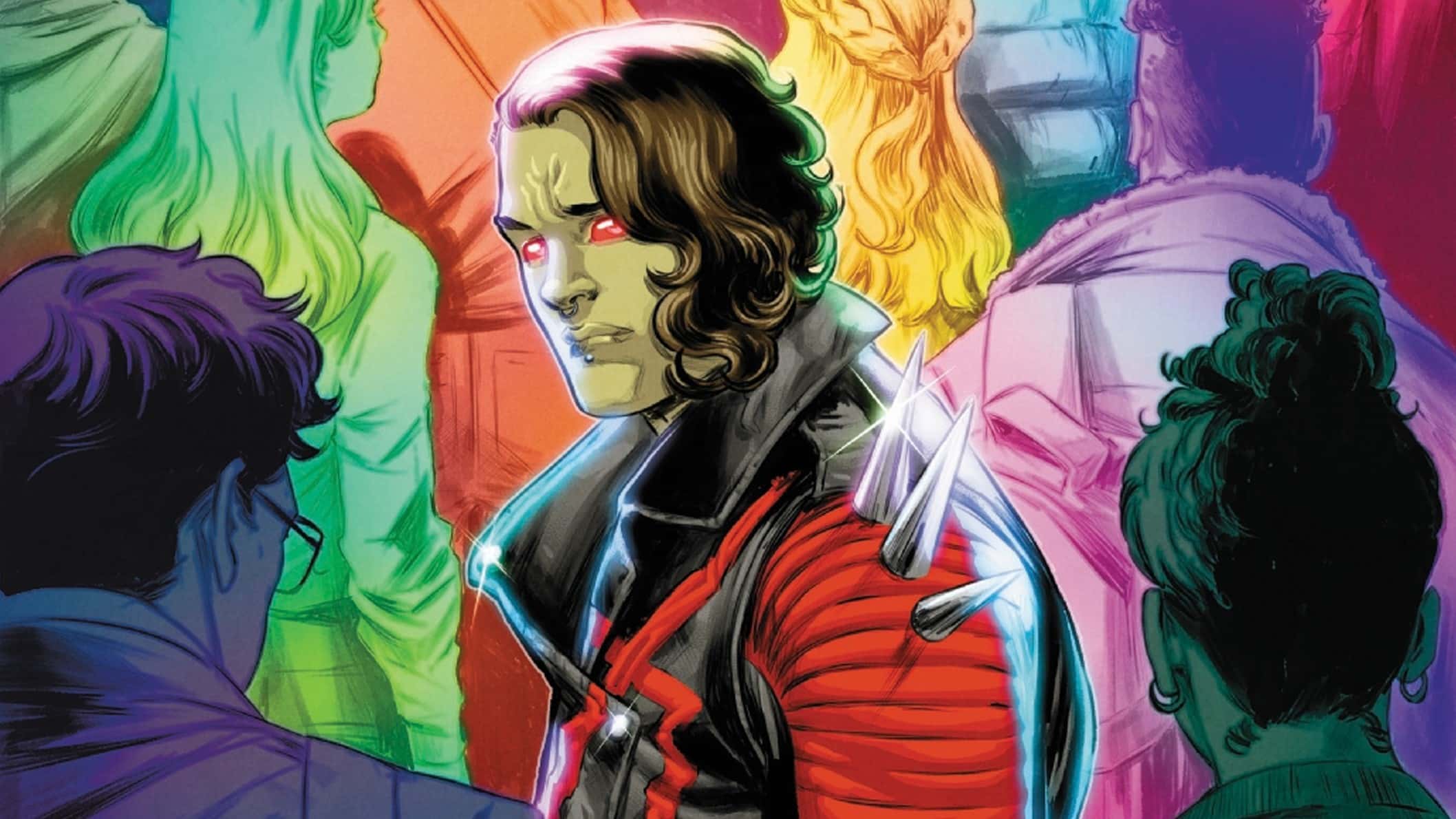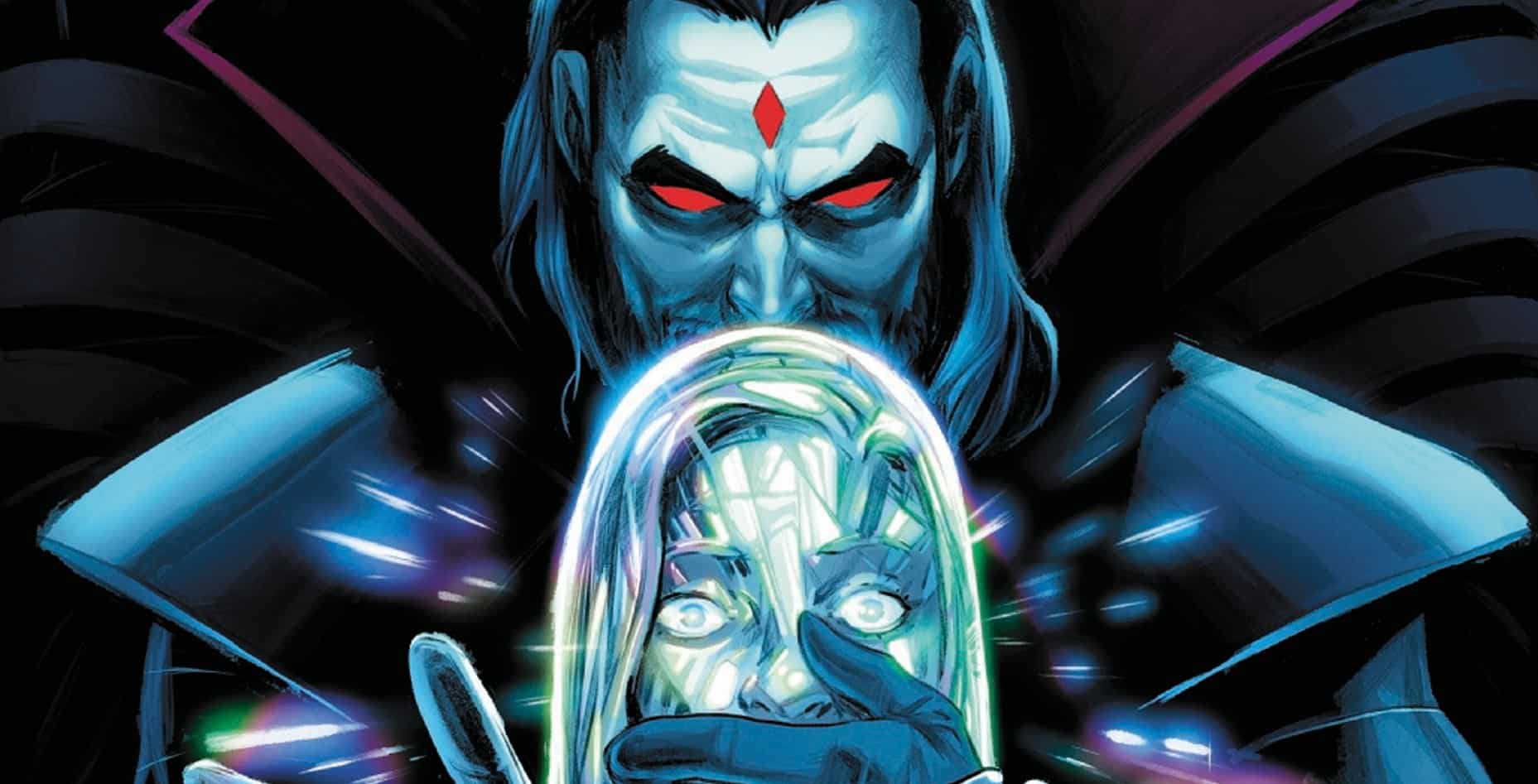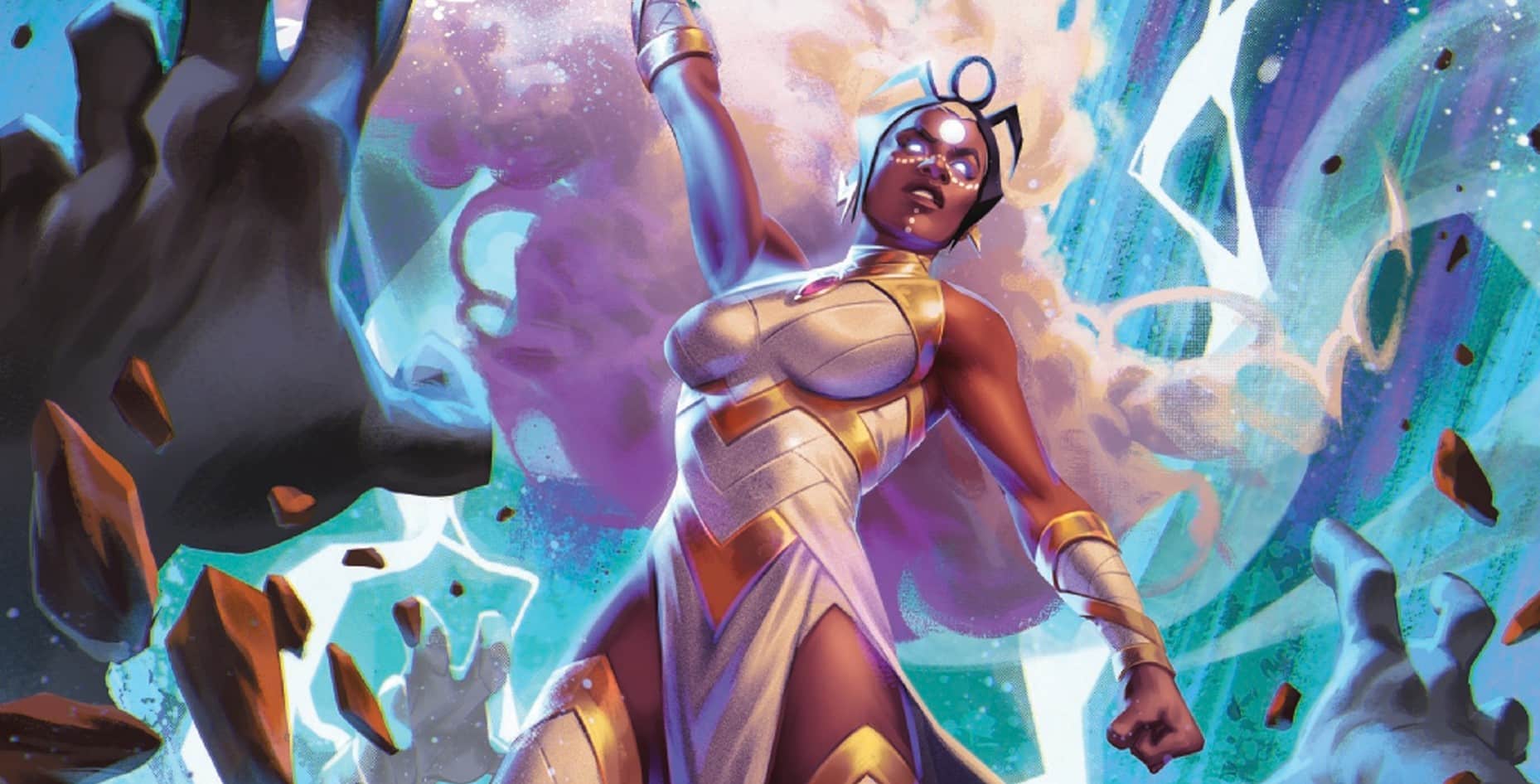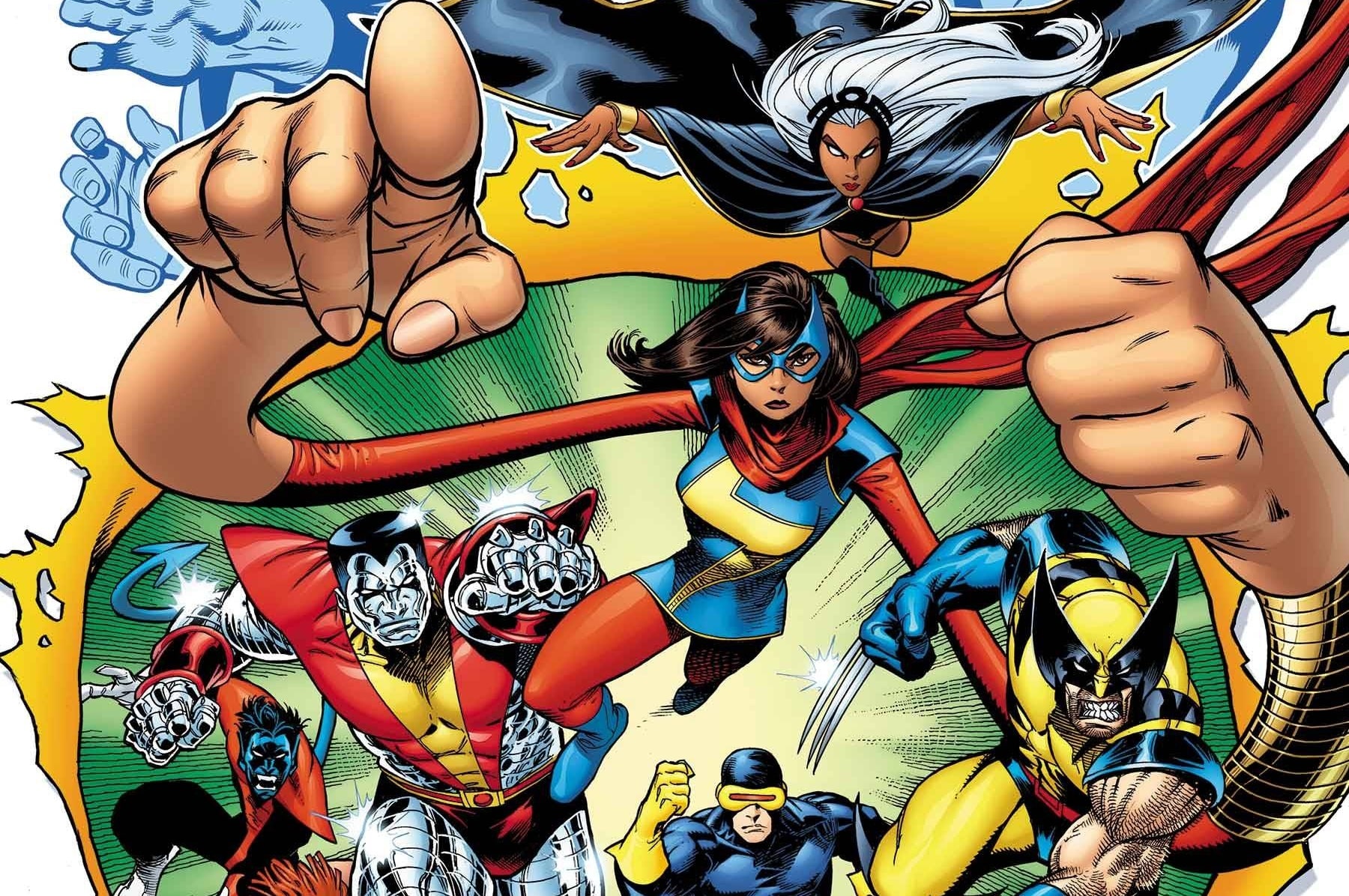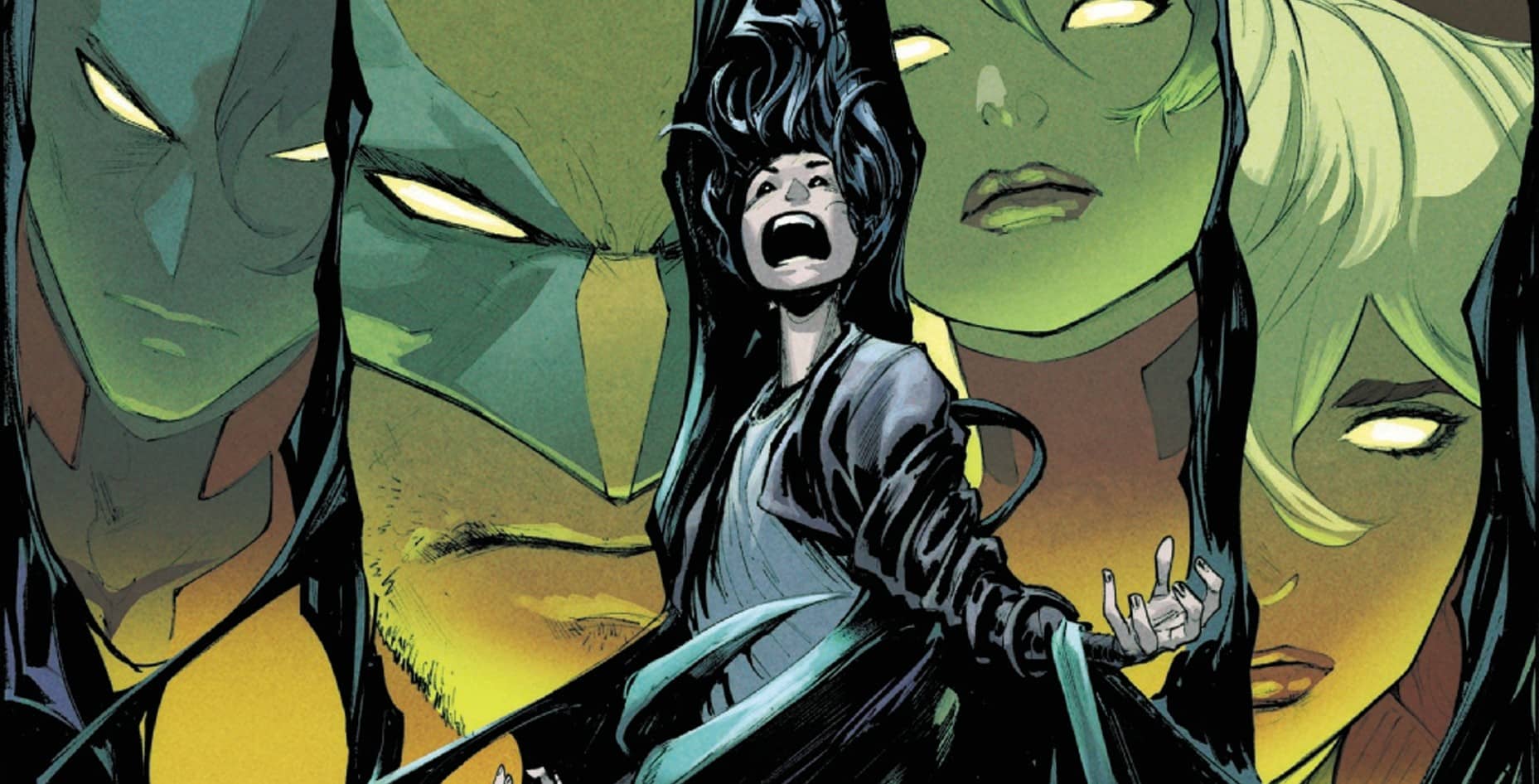The next generation of mutants find work, or at least internships, at a startup that wants to read your genes and help you “fix” what’s “wrong” with them. Guess how that pans out in Exceptional X-Men #6, written by Eve Ewing, drawn by Carmen Carnero, colored by Nolan Woodard and lettered by Travis Lanham.
Like the best teen mutant books of previous eras, Ewing and Carnero’s Exceptional X-Men has tried to split time and attention between its handful of students and the adults who try to raise and manage them. Here that means Bronze (angsty, dramatic, metallic, tentacles), Axo (big, green, trusting, phasing telepath) and Melee (who will fight you) on the one hand; Kitty Pryde, Emma Frost and Bobby Drake on the other. Till recently, it’s encouraged us to focus on Kitty, who made a big decision, or learned something, or got an emotional gut punch, in every issue. No one knows better than Kitty that it’s time for her students to step in and take charge — and way past time for her to get a day off.
That’s what she gets, emotionally if not practically, this issue: She even takes a walk in a park with Nina, who seems to have become (drum roll) her first human, non-mutant girlfriend. “You’re on cloud nine,” Emma says, seeing Kitty just afterward. As she should be. “Are we capable of normalcy? Can we be with normal people?” Kitty asks her colleague, the White Queen, and Emma answers with absolute honesty, crestfallen: “I’m … not the one to ask.” More of that dynamic — where they’re finally adults together — please.
But not this issue: This issue’s about the kids, and in good news that will be no news at all if you’re following this most thoughtful of current series, Ewing gets the psychology right: Axo’s thinking about how he can’t pass, and how he wants to help other mutants, and Bronze — as much as she wants other kids to like her — can’t help casting suspicion on the adult world. In kitchens, in asides during training sessions, in dialogue about who wants flautas, who gets the next potato chip, who needs a job, these kids look perfect, feel real and sound like individuals. They want to feel independent: They wish Emma would stop supporting them financially, even though she has cash to spare. Then they turn around and ask their mentors for help finding jobs. Touché. 10/10. No notes.
That is, no notes about the quiet moments, the dialogue-driven scenes set in Axo’s family apartment, in the dance studio that’s become a team practice space, or within Kitty’s walk in the park. Once the teens try out for jobs — not as interns (Priti, Kitty’s roommate, corrects herself fast, and amusingly), no sirree, but “internal consultants” — we meet the Big Bad of the coming story arc, and the plot begins, and the note is, maybe, G flat.
As in, gee, this plot falls kind of flat. A mutant with ram’s horns named Sheldon Xenos (Greek for “foreign”), who can’t pass for baseline human (just like Axo), runs a company called Verate that collects genetic information sent by subscribers (just like 23andme), then promises to help you fix what ails you (just like the “mutant cure” plotline from the Fox X-movies, and the Joss Whedon run, and Season 1, Episode 9 of the 1990s animated series). Predictably, Axo, who can’t pass, likes the idea, while the other teens reject it out of hand: “Preying on people’s insecurities to collect their most personal information”? No thanks.
Xenos says he wants to hire young people so he can overcome youth distrust, perhaps by means of social media: We’ve seen that Marvel plot before too, most recently (unless I missed something) in the most recent volume of Champions. Xenos talks like the grandiose, unreliable techbro he’s meant to be: “My dream is to help the whole world! From birth!” By creating, for every human being who sends him hair and spittle and money, “a fully customized bio-informed cognitive behavioral and physiological optimization portfolio.” Melee and Bronze have his number immediately: “Eugenics, data privacy … fatphobia, body shaming, telling mutants to ‘fix’ themselves.”
Those two know what comic they’re in, and the beautifully backlit Chicago Loop sunset of their nearly full-page panel show us that Carnero and Woodard know how to make them look good. This series’ regular artist/colorist duo also know how to draw street clothes — yay! check out Bronze’s outfit, and Kitty’s date! Carnero and Woodard know how to distinguish smitten, from suspicious, from unsure, from not-quite-there-yet-but-give-me-another-chance facial expressions (on Kitty, on Emma, on Axo). And they know how to make Xenos appear convincingly, charismatically, smilingly, obviously — to us, the readers — villainous. Only a naive teen, or perhaps a B-school moneybags, would trust this literally Satanic-looking, expensive-suit-wearing ick-monster. Wait till you see — and see through — the fake crime-stopping, fake couples-counseling, hammy ruse Xenos pulls to make sure Axo feels good about getting involved with Verate. If only Axo had read a few more stories about mutants before he decided he wanted this job.
Points of Pryde
- Once again, check out the letter column. Kitty dates girls, on-page, and readers feel seen. Longtime internet stalwart X-fan JKIII gets a letter printed, too.
- The close-up on Axo’s face when he says, “Maybe some people out there can help us”? Followed by the reality of Xenos’ deceptive corporate office? Another 10/10. Corporations (including Marvel) may give you things you love, but they will never love you back.
- Kitty’s roommate Priti pops into the dance studio “to use the industrial washer.” With a tub of laundry. How many cape comics get these details of daily adult life so right?
- Xenos folds paper cranes. A nervous habit? A reference to the hibakusha? What?
Buy Exceptional X-Men #6 here. (Disclaimer: As an Amazon Associate, ComicsXF may earn from qualifying purchases.)
Stephanie Burt is Professor of English at Harvard. Her podcast about superhero role playing games is Team-Up Moves, with Fiona Hopkins; her latest book of poems is We Are Mermaids. Her nose still hurts from that thing with the gate.

